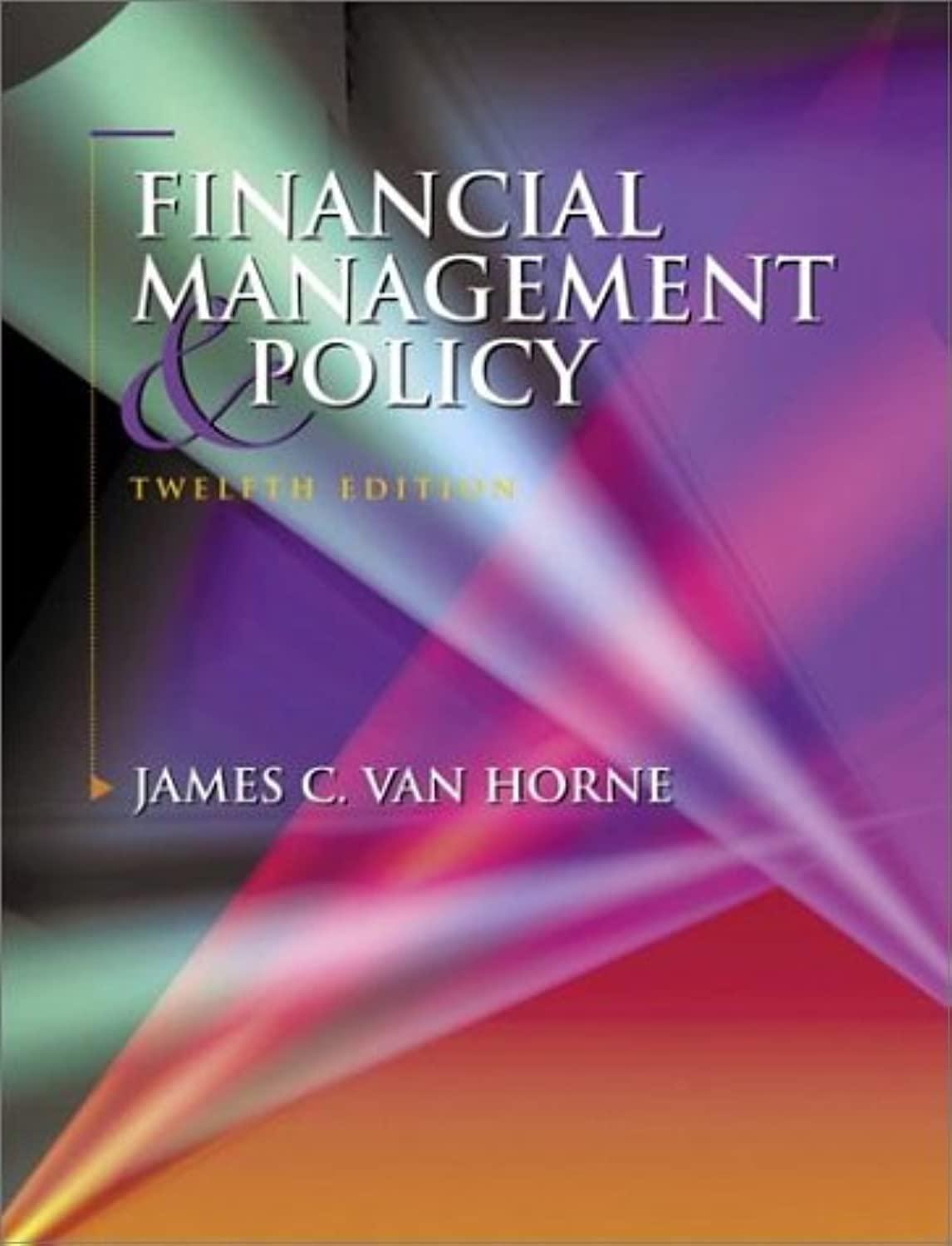a. (in thousands): Preferred Common Debt Stock Stock EBIT $1,500 $1,500 $1,500 Interest on existing debt 360
Question:
a. (in thousands):
Preferred Common Debt Stock Stock EBIT $1,500 $1,500 $1,500 Interest on existing debt 360 360 360 Interest on new debt -480 - -
Profit before taxes $ 660 $1,140 $1,140 Taxes Profit after taxes Preferred stock dividend -- -440 --
Earnings available to common stockholders $ 396 $ 244 $ 684 Number of shares 800 800 1,050 Earnings per share $ ,495 $ ,305 $ ,651 Chapter 10 Making Capital S t r u c t u r e Decisions 305 EBIT (thousands of $)
b. Approximate indifference points: debt and common, $2.4 million in EBIT; preferred and common, $3.3 million in EBP, debt dominates preferred by the same margin throughout, there is no indifference point. Mathematically, the indifference point between debt and common is (in thousands):
EBIT * - $840 - EBIT * - $360
-
800 1,050 EBIT*(1,050) - $840(1,050) = EBIT*(800) - $360(800)
250EBIT* = $594,000 EBIT* = $2,376 Note that for the debt alternative, the total before-tax interest is $840, and this is the intercept on the horizontal axis. For the preferred stock alternative, we divide $440 by (1 - .40) to get $733. When this is added to $360 in interest on existing debt, the intercept becomes $1,093.
c. For the present EBIT level, common is clearly preferable. EBIT would need to increase by $2,376 - $1,500 = $876 before an indifference point with debt is reached. One would want to be comfortably above this indifference point before a strong case for debt should be made. The lower the probability that actual EBIT will fall below the indifference point, the stronger the case that can be made for debt, all other things the same.
Step by Step Answer:







